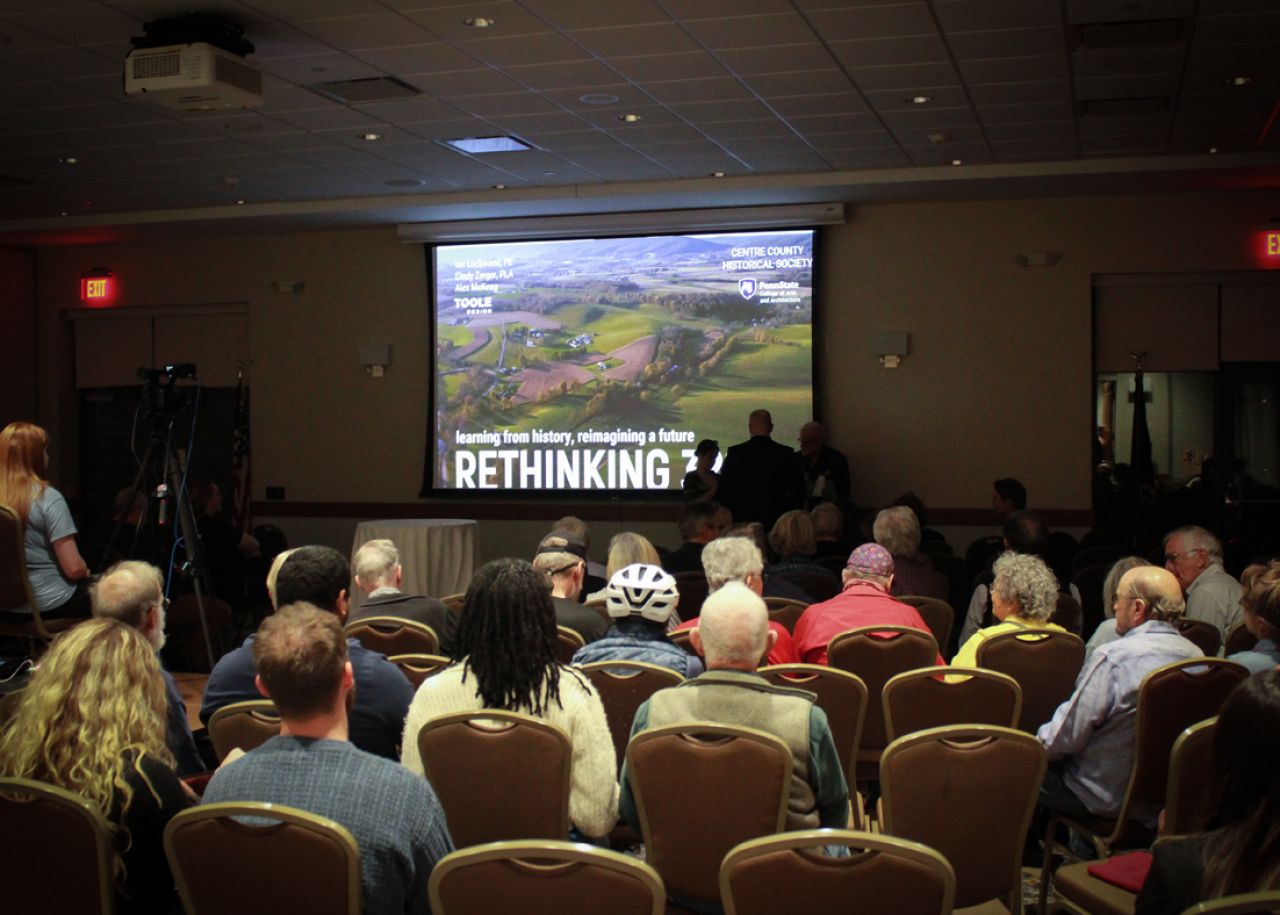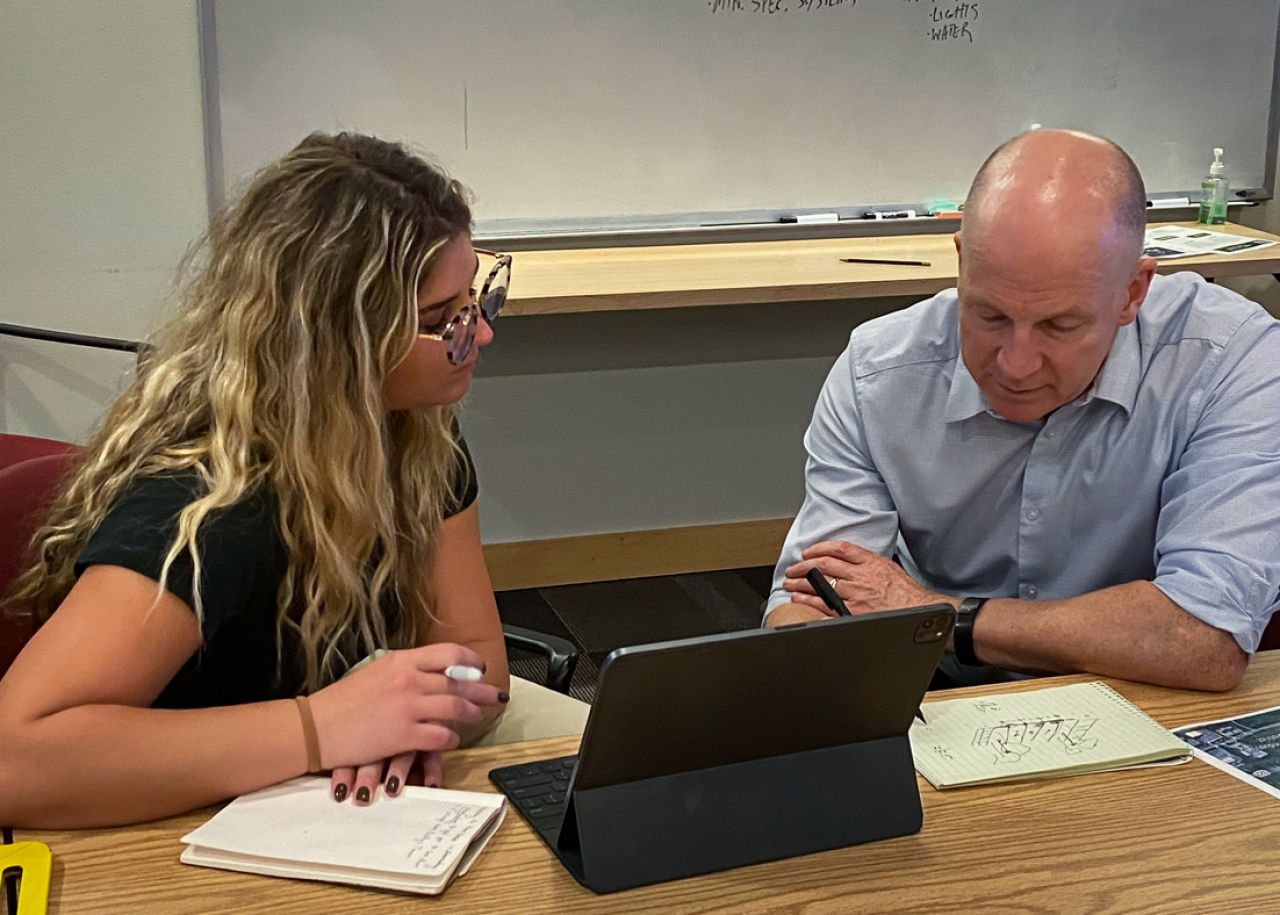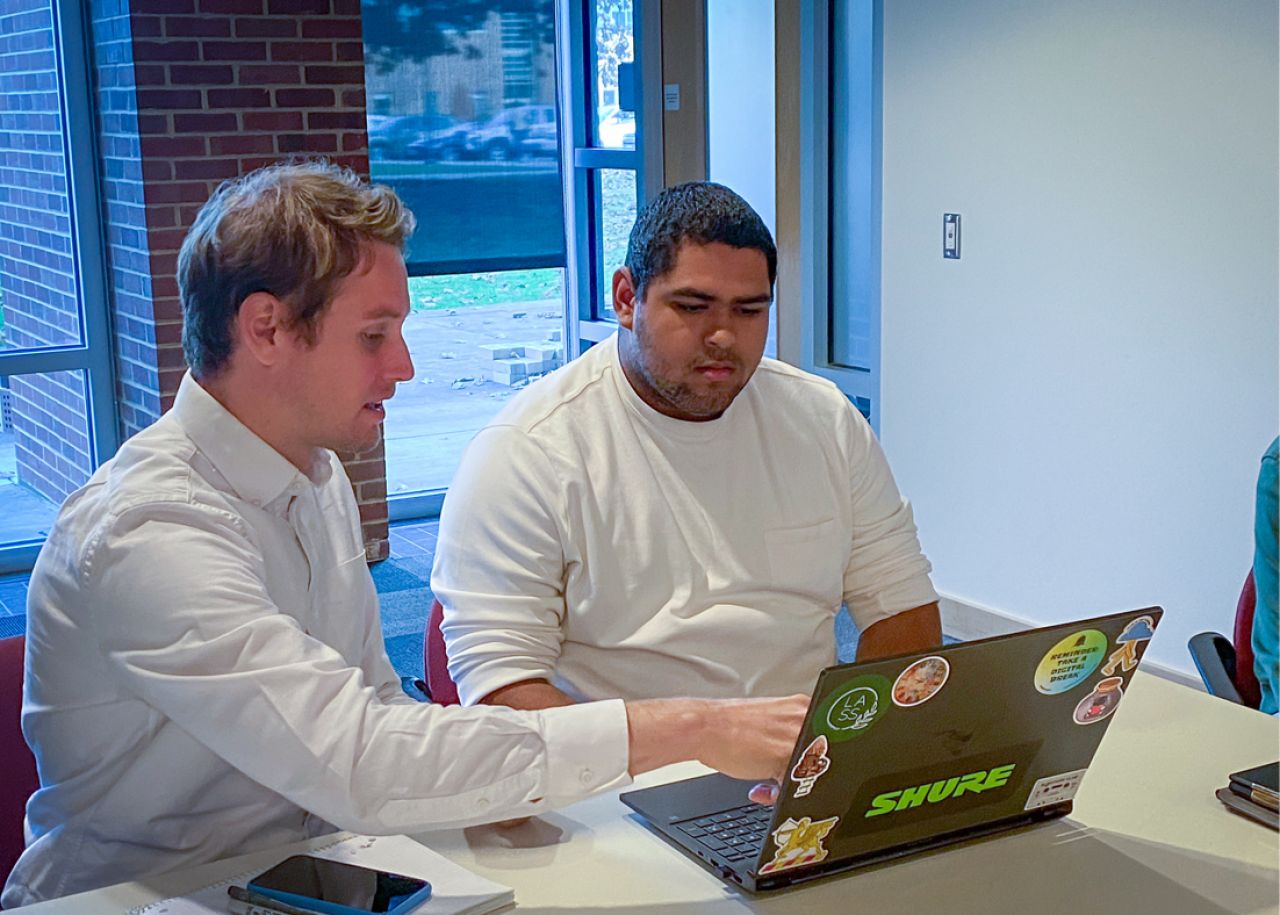January 27, 2025
Engineer, transportation expert shares thoughts on local traffic issues
Ian Lockwood visited the Stuckeman School to share his thoughts on a proposed freeway through the area with students, community members, local planning agencies, PennDOT

UNIVERSITY PARK, Pa. — The Stuckeman School in the Penn State College of Arts and Architecture hosted civil engineer and transportation expert Ian Lockwood and his team from planning and design firm Tool Design Group in October as part of the Department of Landscape Architecture’s ongoing “Rethinking 322 studio course” that explores alternative options for a proposed Pennsylvania Department of Transportation (PennDOT) freeway through the historic Penns-Brush Valley, located to the south of the University Park campus.
Paul Daniel Marriott, associate professor of landscape architecture, organized the visit to showcase model transportation projects from across the United States to his students who have been researching the corridor with residents and PennDOT representatives.
“Rethinking 322: Strategies for the Proposed State College Area Connector in Penns-Brush Valley" is an annual publication resulting from the upper-level studio course led by Marriott that centers around the State College Area Connector, a proposal by PennDOT to build an 8-mile, four-lane limited-access freeway connecting the Mount Nittany Expressway to U.S. 322 at Potters Mills. Marriott and his students have come in to work with area residents to explore alternative options to the PennDOT proposal.
Lockwood, a livable transportation engineer, gave a public lecture on the “Rethinking 322” project, on Oct. 30 at the Wyndham Garden State College, located along the freeway corridor, where he and his Tool Design Group colleagues Alex McKeag, urban planner, and Cindy Zerger, landscape architect, shared ideas and examples of communities around the country that have successfully challenged Department of Transportation projects in their respective states, which resulted in community-driven designs that have improved safety, protected local resources and conserved rural landscapes. More than 120 people attended the event.

Aaron Solderich, fifth-year landscape architecture student, helped Marriott coordinate Lockwood’s visit and was impressed at the number of students, activists and residents that came to the event. He said bringing Lockwood into the conversation as a neutral third party “really helped get people behind” options other than highways.
"The Toole [Design Group] visit represents a turning point in our ‘Rethinking 322’ work,” said Marriott. “Ian's lecture showcased successful highway design solutions that could be adapted here in the Centre Region [so] local residents and advocates were excited by credible options for a safer and more beautiful 322.”
Lockwood visited the landscape architecture studios in the Stuckeman Family Building on the University Park campus on Oct. 31 to speak with students about the 322 project and exploring transportation options in different areas of the United States. Lockwood and his team also met with local advocates to discuss traffic calming and road diet options in Boalsburg, Pennsylvania, to improve pedestrian access and highway safety. The Toole team also gave feedback on student work.
The Toole Design Group team, landscape architecture students and the Centre County Farm Bureau also met with Bonnie Darlington of Darlington Farm, a 250-acre family-operated farm located in Boalsburg. Landscape architecture fifth-year student Layla Khalifa, who has taken Marriott’s studio course for the past two years, said, “I focus on the protection of agricultural land and the families that would be disrupted by all the proposed PennDOT projects.”

Khalifa said there are three farms that the highway would go through, with one of them being Darlington Farms, posing a risk of putting the farm out of business.
“[Lockwood] gave us his time and patience and gave great advice, which gave students a lot of hope and excitement,” said Khalifa. “Overall, [the visit] has brought a lot of hope to the members of the Penns-Brush Valley community that they can make a difference.”
The visit was completed with a reception held at the Centre Furnace Mansion at the Centre County Historical Society, which provided one last opportunity for residents, faculty, students, landowners and organizations in the area to discuss options surrounding the proposed freeway with the Toole team and the students in Marriott's course.
“We have a lot of people checking in on us now,” said Solderich on his perspective of the outcome of the visit. “People are actively trying to seek out what we are doing, which is amazing that as students we are able to have that kind of impact at all.”
The events and meetings were sponsored by the Department of Landscape Architecture, with additional support from the Larson Transportation Institute and Penn State Sustainability. Financial support for the visit came from the Stuckeman School’s Hamer Center for Community Design and the Centre County Historical Society.